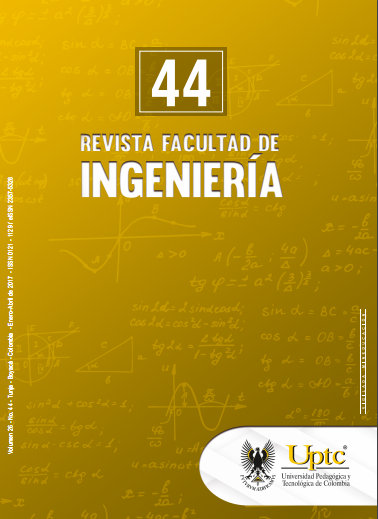Characterization of copper smelter slag and recovery of residual metals from these residues

Abstract
The pyrometallurgical copper extraction process generates 2.2 t of residues for each ton of produced metal. Initially, this paper shows the physical and chemical characterization of a copper processing residue, followed by the procedure to obtain the gold and silver that are contained in the copper residue. The characterization of a white metal oxidized calcine indicates a high content of copper as cupric ferrite, and important values of gold and silver. Gold and silver concentrations were 38.5 g t-1 and 1085 g t-1, respectively. The gold was found scattered in cupric ferrite grains, while the silver was dissolved in a matrix of Cu-S in amounts between 1 % and 50 %. Cyanidation tests showed that 95 % gold recovery could be obtained with a concentration of 0.06 g l-1 KCN, a pH of 10.5, room temperature, and a residence time of 80 h. When the temperature was increased to 75 °C, and the other cyanidation parameters were maintained intact, the same recovery was obtained but with a shorter residence time. Silver recovery was less than 30 % with a concentration of 1.2 g l-1 KCN, pH of 10.5, temperature of 45 °C, and a residence time longer than 72 h.
Keywords
copper smelter slag, cyanidation, gold, silver
References
- M. Sánchez and M. Sudbury, “Physicochemical characterization of copper slag and alternatives of friendly environmental management,” J. Min. Metall. B Metall., vol. 49 (2), pp. 161-168, 2013. DOI: https://doi.org/10.2298/JMMB120814011S
- S. Roy, A. Datta, and S. Rehani, “Flotation of copper sulphide from copper smelter slag using multiple collectors and their mixtures,” Int. J. Miner. Process., vol. 143, pp. 43-49, Oct. 2015. DOI: http://doi.org/10.1016/j.minpro.2015.08.008. DOI: https://doi.org/10.1016/j.minpro.2015.08.008
- P. Cendoya, “Efecto en la resistencia de las escorias de fundición de cobre como agregado fino en el comportamiento resistente del hormigón,” Ingeniare. Rev. Chil. Ing., vol. 17 (1), pp. 85-94, Apr. 2009. DOI: http://doi.org/10.4067/S0718-33052009000100009. DOI: https://doi.org/10.4067/S0718-33052009000100009
- E. A. Johnson, L. L. Oden, P. E. Sanker, and R. L. Fulton, “Minor-Element Interactions in Copper Matte Smelting,” p. 9, 1984.
- O. Herreros, R. Quiroz, E. Manzano, C. Bou, and J. Viñals, “Copper extraction from reverberatory and flash furnace slags by chlorine leaching,” Hydrometallurgy, vol. 49 (1-2), pp. 87–101, Jun. 1998. DOI: http://doi.org/10.1016/S0304-386X(98)00010-3. DOI: https://doi.org/10.1016/S0304-386X(98)00010-3
- A. N. Banza, E. Gock, and K. Kongolo, “Base metals recovery from copper smelter slag by oxidising leaching and solvent extraction,” Hydrometallurgy, vol. 67 (1-3), pp. 63-69, Dec. 2002. DOI: http://doi.org/10.1016/S0304-386X(02)00138-X. DOI: https://doi.org/10.1016/S0304-386X(02)00138-X
- C. Arslan and F. Arslan, “Recovery of copper, cobalt, and zinc from copper smelter and converter slags,” Hydrometallurgy, vol. 67 (1-3), pp. 1-7, Dec. 2002. DOI: http://doi.org/10.1016/S0304-386X(02)00139-1. DOI: https://doi.org/10.1016/S0304-386X(02)00139-1
- C. Gasparrini, The Metallurgy of the Precious Metals as Affected by their Mineralogy and Manner of Occurrence in their Ores. 1984.
- N. Hedley and H. Tabachnick, Chemistry of cyanidation. American Cyanamid Company, Explosives and Mining Chemicals Department, 1958.
- C. A. Fleming, “Hydrometallurgy of precious metals recovery,” Hydrometallurgy, vol. 30 (1-3), pp. 127-162, Jun. 1992. DOI: http://doi.org/10.1016/0304-386X(92)90081-A. DOI: https://doi.org/10.1016/0304-386X(92)90081-A
- J. Vargas Gallardo, Metalurgia del oro y la plata. Editorial San Marcos, Lima, 1981.
- V. Kudryk and H. H. Kellogg, “Mechanism and rate-controlling factors in the dissolution of gold in cyanide solution,” J. Met., vol. 6 (5), pp. 541-548, 1954. DOI: https://doi.org/10.1007/BF03398872
- D. Menne, “Assaying Cyanide Extractable Gold within an Hour, and Addressing Effects of Pregand Assay-Robbing,” Extr. Metall. Gold Base Met. Kalgoorlie WA, AusIMM, 1992.
- M. I. Jeffrey, “A Kinetic and electrochemical study of the dissolution of gold in aerated cyanide solutions: the role of solid and solution phase purity,” 1997.
- M. Benavente and J. Martínez, “Especiación acuosa de cianuro y componentes derivados en lavados de colas de minerales de oro,” Nexo, vol. 19 (1), pp. 1-9, 2006.
- N. Rojas Reyes, Recuperación de oro y plata desde residuos ferríticos mediante cianuración, Universidad de Concepción, 2003.